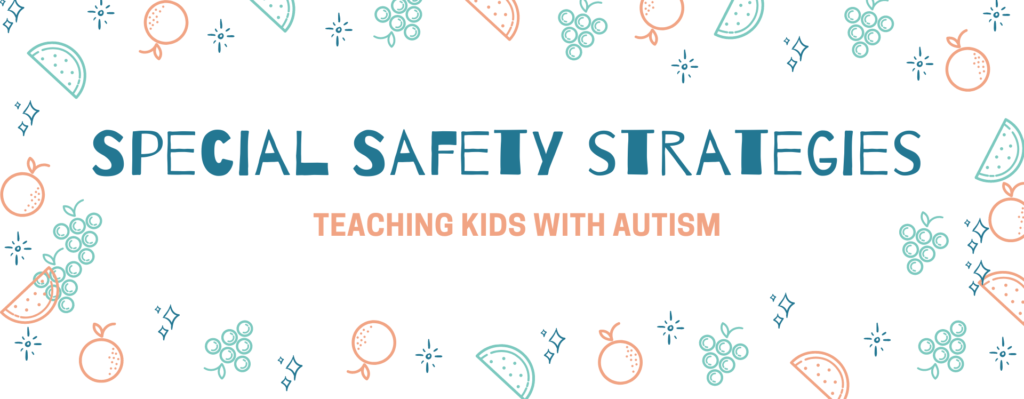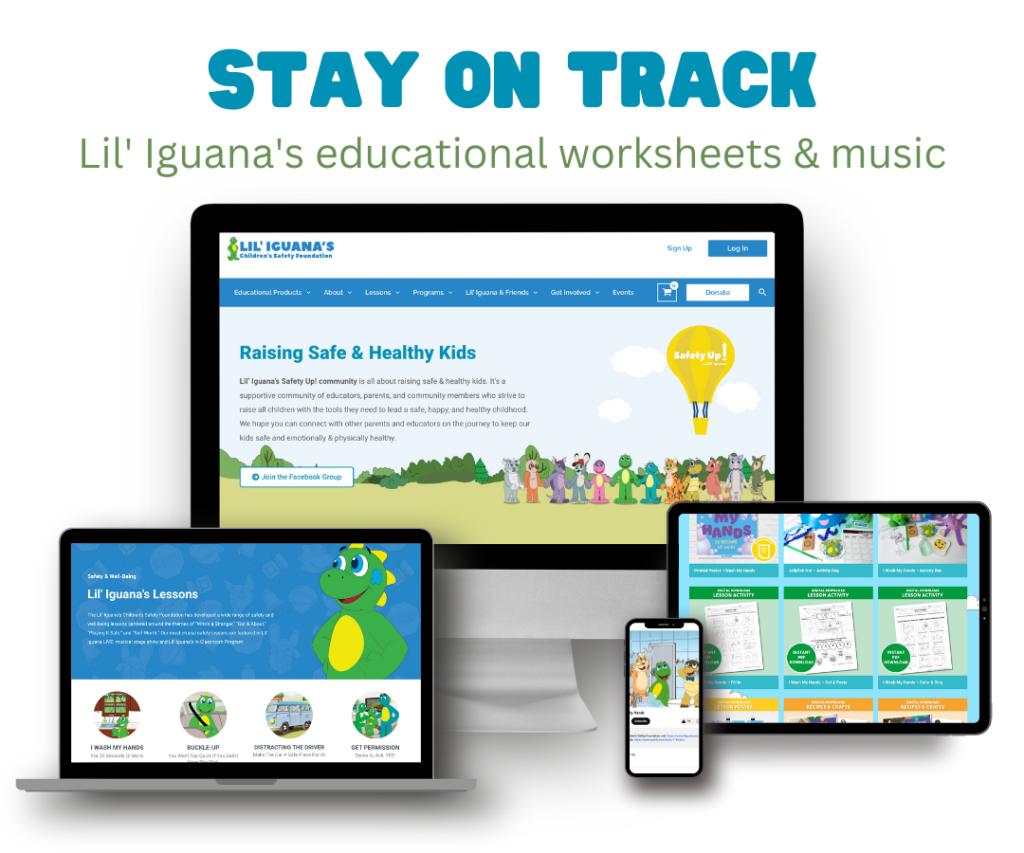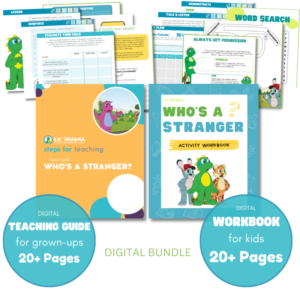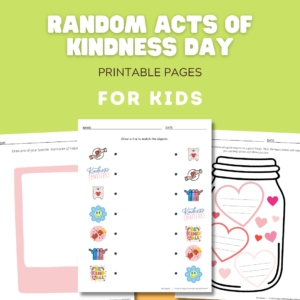
Teaching Safety to a Child with Autism
Five Effective Tips & Strategies
Remember, teaching safety to a child with autism may require patience, repetition, and creativity. But with the right strategies and approach, you can help your child learn how to stay safe in a variety of situations.
Teaching safety to a child with autism can be challenging. Here are five strategies and tips:
- Repetition: Repeat safety concepts and procedures until they understand. Children with autism often benefit from repetition.
- Clear & Concise Language: Children with autism often have difficulty processing complex language or abstract concepts.
- Role-Playing & Storytelling: Visual aids and imagination help share safety concepts in a scene.
- Music: Singing along to music can help autistic children learn by providing a structured and predictable environment.
- Positive Reinforcement: Praise the child when they demonstrate safe behavior or follow safety procedures correctly. This can help reinforce the importance of safety and encourage the child to continue practicing safe behavior.
Children listen and want to absorb the world around them. Read more in depth of each strategy below.
Learning with Repetition
Repetition is a common and effective teaching strategy that can be particularly helpful for children with autism. Many children with autism thrive on routine and predictability, and repetition can provide this in a structured and consistent way. Children with autism may become anxious or overwhelmed in new or unfamiliar situations, but repetition can help to reduce this anxiety and provide a sense of security. When children are exposed to the same information or activities repeatedly, they become more comfortable and confident in their ability to understand and engage with the material.
When children with autism are exposed to new concepts or skills, they may struggle to remember and retain information. However, with repeated exposure and practice, the information becomes more familiar and is better retained in their memory. This helps to improve memory and retention, repetition can also help to improve cognitive skills in children with autism. By practicing and repeating activities and concepts, children with autism can develop problem-solving skills, critical thinking skills, and other cognitive abilities.
Practicing something consistently can help to improve communication and social skills in children with autism. By repeatedly practicing social interactions and communication skills, children with autism can become more comfortable and confident in their ability to interact with others. You can also use games or role-playing activities to reinforce safety concepts. Repetition is a powerful tool that can help autistic children learn and develop. By providing structure, familiarity, and practice, repetition can improve memory, retention, cognitive skills, and social skills in children with autism.
Using Clear & Concise Language
Teaching a child with autism clear and concise language is important because children with autism often have difficulty processing complex language or abstract concepts. They may struggle with understanding figurative language, sarcasm, idioms, and other forms of speech that are not literal or straightforward. This can make it challenging for them to understand instructions or information presented to them in a way that is not clear and concise.
Simple language can reduce confusion and frustration for the child with autism. It’s easy to fall back into using euphemisms when discussing especially sensative topics. When language is too complex or abstract, they may become overwhelmed or discouraged, which can lead to behavioral issues or a lack of engagement in the learning process.
Overall, using clear and concise language when teaching a child with autism is essential for promoting effective communication, understanding, and learning. It helps to ensure that the child receives information in a way that they can comprehend, which can ultimately lead to greater success and achievement. It’s important to use clear and concise words when teaching safety and avoid sarcasm or euphemisms.
Learning with Music
Music is a powerful tool that can have a profound impact on children with autism. It has been shown to have a variety of benefits for children on the autism spectrum, including improved social skills, communication skills, and cognitive abilities. One of the ways that music can help autistic children learn is by providing a structured and predictable environment. The repetition and structure of music can help children with autism to better retain new information.
In addition to providing structure, music can also serve as a means of communication for children with autism. Many children with autism struggle with verbal communication, but music can provide an alternative way for them to express themselves. Singing, playing an instrument, or even just listening to music can all be used as a form of communication for children with autism. Music can also help to improve social skills in children with autism. Group music lessons, in particular, can provide an opportunity for children to interact with their peers and learn how to take turns, follow rules, and cooperate with others. These social skills are important for children with autism, as they often struggle with social interactions and communication.
Finally, music has been shown to have cognitive benefits for children with autism. Research has shown that music can improve memory, attention, and other cognitive skills in children with autism. It can also help to improve coordination and fine motor skills, which can be particularly challenging for children with autism. Music can be an incredibly effective tool for helping autistic children learn and develop. Whether through structured music lessons, singing, or simply listening to music, the benefits of music for children with autism are numerous and varied. So if you have a child with autism, consider incorporating music into their education and see the positive impact it can have on their learning and development.
Using Stories & Interactive Role-Playing
Role-playing is a valuable teaching tool that can be particularly beneficial for children with autism. Role-playing allows children to practice and explore new social situations and communication skills in a safe and controlled environment. One of the ways that role-playing can help autistic children learn is by providing a structured and predictable environment. Many children with autism thrive on routine and structure, and role-playing can provide this in a fun and engaging way. The repetition and structure of role-playing scenarios can help children with autism to better understand and retain new information.
Many children with autism struggle with verbal communication, but role-playing allows them to practice and express themselves in a nonverbal way. Storytelling can also serve as a means of communication for children with autism. Through role-playing, children with autism can learn how to express their thoughts, feelings, and needs in a socially appropriate way. Role-playing can also help to improve social skills in children with autism. By practicing and role-playing different social situations, children with autism can learn how to interact with others and develop their social skills. This can include learning how to initiate conversations, how to take turns, and how to follow social rules and norms.
Storytelling can help to improve cognitive skills in children with autism. By engaging in role-playing activities, children with autism can practice problem-solving, decision-making, and critical thinking skills. This is a powerful teaching tool that can help autistic children learn and develop. By providing structure, communication, and social and cognitive skills practice, role-playing can have a positive impact on children with autism. So if you have a child with autism, consider incorporating role-playing into their education and see the benefits it can have on their learning and development.
Provide Positive Reinforcement
Providing positive reinforcement to a child with autism while teaching is important because it can encourage and reinforce appropriate behavior and learning. Children with autism often struggle with social interaction, communication, and behavior, and may find it difficult to learn new skills. Positive reinforcement can help them to stay engaged in the learning process and motivate them to continue practicing the behavior or skill.
Positive reinforcement involves providing praise or rewards for desirable behavior or actions. For example, if a child with autism follows instructions correctly or completes a task, they may receive verbal praise, a sticker, or a small toy. This positive reinforcement can help to increase the likelihood that the child will continue to engage in the desired behavior or action.
Research has shown that positive reinforcement is a highly effective teaching strategy for children with autism. It can help to increase motivation, reduce frustration, and encourage independence. It can help to build a positive relationship between the child and the teacher or caregiver, which can further enhance learning and development. Promoting learning and development is a positive way for children to learn. It can help to build confidence, motivation, and independence, and can help the child to develop the skills they need to succeed.
April is recognized as Autism Awareness Month to increase awareness and acceptance of autism spectrum disorder (ASD), a neurological and developmental disorder that affects communication, social interaction, and behavior. Autism Awareness Month aims to educate the public about autism, reduce stigma, and encourage early diagnosis and intervention. World Autism Awareness Day is held on April 2nd.
Follow up with the Ultimate Teaching Guide for kids!
Printable Activity
Tag @LiliguanaSafety on socials and hashtag it #liliguanafun




